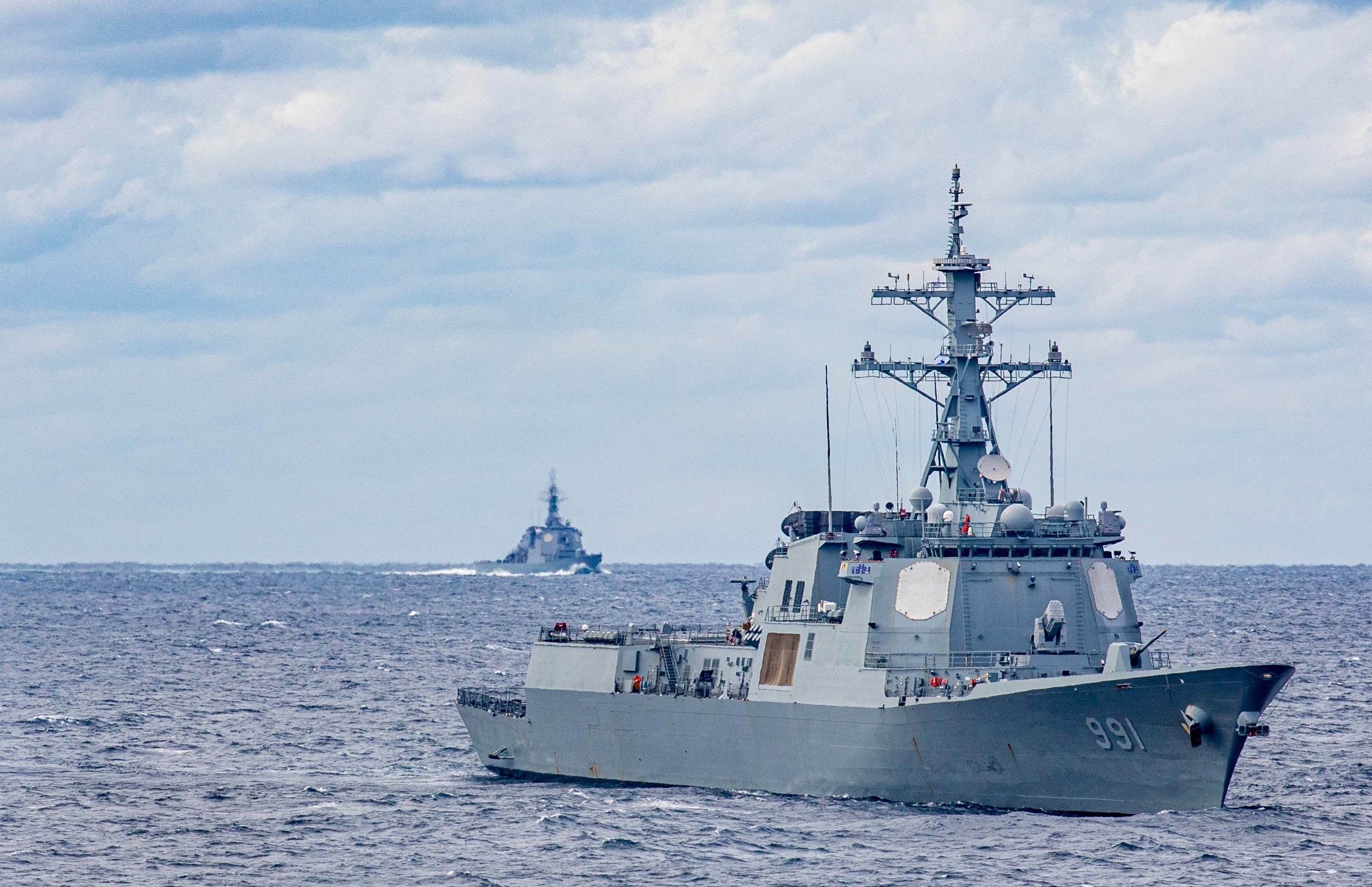
The following post was updated with comments from a Pentagon spokesperson.
Five warships from the U.S., Japan and South Korea held a ballistic missile defense exercise in the Sea of Japan as part of the ongoing military response to this week’s North Korean intermediate-range ballistic missile test over the Japanese home islands, U.S. Indo-Pacific Command said on Thursday.
Guided-missile cruiser USS Chancellorsville (CG-62) and guided-missile destroyer USS Benfold (DDG-65) — both attached to the Ronald Reagan Carrier Strike Group — held the drill with Japan Maritime Self-Defense Force destroyers JS Chokai (DDG-176) and JS Ashigara (DDG-178) and Republic of Korea Navy destroyer ROKS Sejong the Great (DDG-991).
The drills followed shortly after North Korea launched two short-range ballistic missiles closer to South Korea on Thursday in protest to aircraft carrier USS Ronald Reagan (CVN-76) returning to the Sea of Japan earlier this week.
“This exercise enhances the interoperability of our collective forces and demonstrates the strength of the trilateral relationship with our Japan and Republic of Korea (ROK) allies, which is forward-leaning, reflective of our shared values, and resolute against those who challenge regional stability,” reads the INDO-PACOM statement.
The U.S. strongly condemns North Korea’s ballistic missile launch, Pentagon Press Secretary Brig. Gen. Pat Ryder told reporters Thursday. The U.S. is working with Japan and South Korea to also address bomber jets flown by North Korea on the border between North and South Korea.
“We consider this behavior destabilizing, unhelpful and irresponsible,” Ryder said. “And again, we call on the DPRK to cease these types of actions.”
North Korea’s missile tests have the potential to destabilize the region, Ryder said, adding that the United States is prepared for any future tests.
“North Korea is testing its missile program,” Ryder said. “It’s looking to adapt. And the issue here though, is that these actions are provocative. They’re dangerous.”
Benfold and Ashigara are capable of intercepting ballistic missiles with Standard Missile 3 BMD interceptors aboard. Chancellorsville has been upgraded to an advanced version of the Aegis combat system that makes it easier to send threat information to other units with similar combat systems.

“This exercise is intended to respond to regional security challenges amid the increasingly severe security environment surrounding Japan, including North Korea launching ballistic missiles that fly over Japan,” reads a translation of a statement from the Japanese Ministry of Defense.
“[The exercise] promotes bilateral cooperation and demonstrates our trilateral commitment to safeguarding common security and prosperity and strengthening the rules-based international order.
In addition to the ballistic missile shots, North Korea scrambled a dozen fighters for a simulated bombing run toward South Korea.
“Eight North Korean fighter jets and four bombers flew in formation north of the inter-Korean air border at around 2 p.m. for around an hour, appearing to carry out air-to-surface firing exercises, South Korea’s Joint Chiefs of Staff said,” reported news site NK News on Thursday.
“The South Korean military sent out what it called an ‘overwhelming’ response to the DPRK formation with some 30 aircraft, including F-15K fighter jets, but did not specify where they flew or how close they were to the North Korean formation.”
The combined response from the U.S., Japan and South Korea follows a provocative North Korean long-range missile test on Tuesday that overflew the Japanese home islands and landed in the Pacific.
In addition to retasking the Reagan strike group to the Sea of Japan, the U.S. U.S., Korean and Japanese fighters flew show of force missions off the Korean peninsula, USNI News reported.
In total, North Korea has held six missile tests in the last two weeks.
USNI News reporter Heather Mongilio contributed to this article.





